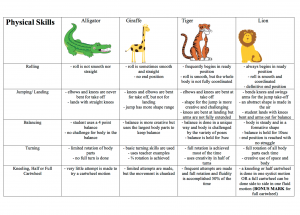Group A Week #3 Post 3
October 30, 2015
Guiding questions:
* What is physical literacy?
This was our day to team teach and my contribution to the group was to read the chapters and do a summary of the above. This is my summary of physical literacy Chapter 13 Teaching Physical Education Today Canadian Perspectives, Daniel B. Robinson & Lynn Randall
Dawn Wilson – September 24, 2015
CHAPTER SUMMARY
Physical literacy is no mind-from-body separation and consider the holistic physical, mental and emotional development of the physically active child.
Shift the subject of PE from a prescribed activity-centered performance model to a person-centered participation model.
Physical literacy stems from three dimensions: Cognitive, Motor (movement) & Affect (social, emotional, spiritual)
Four key indicators of physical literacy: Functional capacities (function), Contextualized capabilities (form), Expressive possibilities (feeling), Flow consciousness (flow)
Expanding PE to include alternative activities such as hiking, climbing or even hula-hooping. Get students to try new things and expose those who may be less athletic a chance to succeed. PE was more focused in teaching athletic sports we have now moved to “physical literacy as the characteristic of a physically literate individual that moves with poise, economy and confidence in a wide variety of physically challenging situations.
I quite enjoyed learning more about this and realizing that PE has REALLY changed! The various activities that we can include and there are many different activities we can use. My initial thought was the way we could include some of traditional practices into PE. Imagine that our ancestors paddled every where! So many outdoor activities that we could have included. In terms of our lesson delivery, a few things I could have personally improve on: directions delivery, time of activities, set up outside, use of whistle. Overall I found the lesson prep and delivery quite enjoyable.

